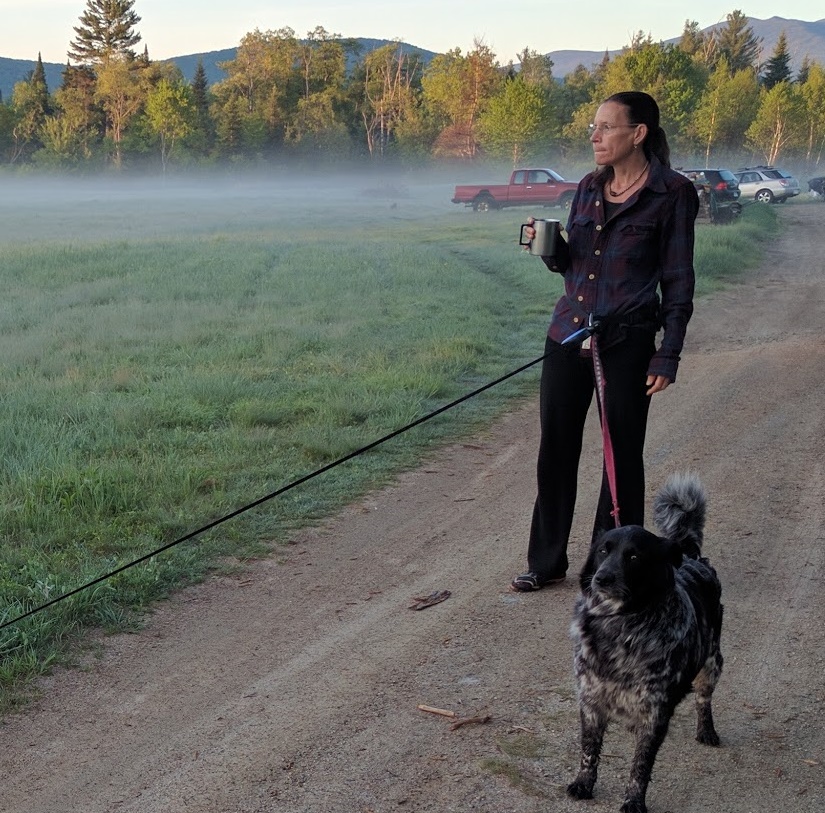Kris Pastoriza of Easton shares a letter she sent to Sarah Stewart, Commissioner of the NH Department of Natural and Cultural Resources.
Dear Ms. Stewart,
I register my opposition to ATV/OHRV use on trails where animals or humans are subject to the noise and pollution. I have spent 30 years road cycling in NH and have experienced the increase in noise and traffic, which have sadly diminished the pleasure of being out on the road. When I hear from people in Coos about the ATV invasion there, on and off the roads, I understand their despair and appreciate that we do not have that problem here as well (yet.)
More important, ATVs are the lowest possible use rail trails. With global warming, the rail trails should be restored to serve the public as railroads. It is not rational to convert them to promote private consumption of fossil fuels for pleasure by the few, or as road bicycle routes, when roads are available for walking and cycling.
DNCR should cease averting its gaze from the fact that burning fossil fuels for fun is no longer sustainable (if it ever was), and support public transportation so tourism and movement of goods can continue without unsustainable use of fossil fuels. We need gas rationing, not the promotion of recreational burning of gas, which is insanity.
We need less cars on the road and more bicycles. An increase in bicycles will lead to slower and more respectful drivers. The shift needs to be away from moving road bicycles off the roads, to making cyclists’ right to use the roads clear to car drivers so beginning cyclists are not afraid to get out of their cars and on to the roads, and start commuting.
At the Oct. 30th Rail Trail information meeting at the Littleton Senior Center, Chris Gamache seemed clearly in support of ATV use of the proposed Littleton to Bethlehem trail extension. No reason was given for BOT’s assumption that ATVs would be permitted on this trail. No mention was made of the serious ATV problems in Coos, other than admission of a lawsuit.
Chris had no comment on the effect of running an ATV trail right behind the Riverglen Assisted Living Community, no comment on the effect of ATVs near the Littleton Riverwalk Area, and described a person riding an ATV as a person with a smile on their face, indicating he is firmly embedded in the cultural value system which considers having a good time more important than other considerations, like how your good time feels to those unable to keep it from entering their ears.
I was surprised and dismayed that the local ATV clubs appear to have been involved with the Littleton to Bethlehem trail development for several years, while the trail abutters have not yet been informed.
The NH Site Evaluation Committees standards for wind turbine noise could provide a model for DNCR noise standards: Note that elderly care centers and residential neighborhoods are considered “sensitive receptors.”
“Pre-construction sound reports shall include a map or diagram clearly showing the following:
(1) Layout of the project area, including topography, project boundary lines, and property lines;
(2) Locations of the sound measurement points;
(3) Distance between any sound measurement point and the nearest wind turbine;
(4) Location of significant local non-turbine sound and vibration sources;
(5) Distance between all sound measurement points and significant local sound sources;
(6) Location of all sensitive receptors including schools, day-care centers, health care facilities, residences, residential neighborhoods, places of worship, and elderly care facilities;
(7) Indication of temperature, weather conditions, sources of ambient sound, and prevailing wind direction and speed for the monitoring period; and
(8) Final report shall provide A-weighted and C-weighted sound levels for L-10, Leq, and L-90.
(c) The predictive sound modeling study shall:
(1) Be conducted in accordance with the standards and specifications of ISO 9613-2 1996-12-15, available as noted in Appendix B;
(2) Include an adjustment to the Leq sound level produced by the model applied in order to adjust for turbine manufacturer uncertainty, such adjustment to be determined in accordance with the most recent release of the IEC 61400 Part 11 standard (Edition 3.0 2012-11), available as noted in Appendix B;
(3) Include predictions to be made at all properties within 2 miles from the project wind turbines for the wind speed and operating mode that would result in the worst case wind turbine sound emissions during the hours before 8:00 a.m. and after 8:00 p.m. each day; and
(4) Incorporate other corrections for model algorithm error to be disclosed and accounted for in the model.
(d) The predictive sound modeling study report shall:
(1) Include the results of the modeling described in (c)(3) above as well as a map with sound contour lines showing dBA sound emitted from the proposed wind energy system at 5 dBA intervals;
(2) Include locations out to 2 miles from any wind turbine included in the proposed facility; and
(3) Show proposed wind turbine locations and the location of all sensitive receptors, including schools, day-care centers, health care facilities, residences, residential neighborhoods, places of worship, and elderly care facilities.”
I am impressed by DNCR’s high standards for the aesthetics of the Cannon cell tower and your resistance to commercial pressure for its expansion. I hope your standards for auditory “aesthetics” and an inhabitable planet are brought up to the same level of integrity.
If ATVs are banned from public ways, what will be lost? Income and “fun” for a few, but also the rage and despair of the many forced to hear them and watch, day after day, yet another sell-out of our grandchildren’s possibility for a decent future.
https://www.theatlantic.com/magazine/archive/2019/11/the-end-of-silence/598366/
https://www.sierraclub.org/sierra/ask-mr-green/what-environmental-impact-motorized-recreation
Kris Pastoriza
Easton, NH





